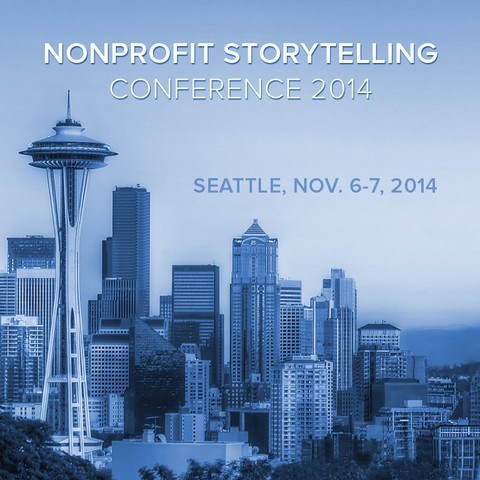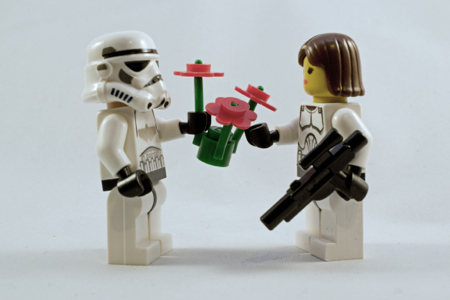Marc A. Pitman's Blog, page 38
June 17, 2014
Nonprofit Marketing Tips from 19 Experts
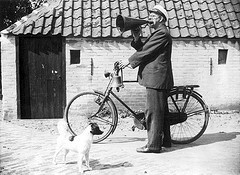 A while ago, I was invited to be a guest lecturer at Brandeis. As my friend David Mersky was introducing me, I put this question across various social media platforms:
A while ago, I was invited to be a guest lecturer at Brandeis. As my friend David Mersky was introducing me, I put this question across various social media platforms:
RIGHT NOW: Nonprofit people, what marketing tips would you tell a graduate class on philanthropy? I'm guest lecturing at Brandeis right now and would love to show the power of social media.
There was a lot of wisdom in the responses so I thought I'd share them with you. I'm including the links to the people who posted them.
Marketing Tips for Nonprofits
On Google+
Julia Campbell: Passion over technology! If you have a compelling story to tell and you can authentically connect with people, you can succeed on any marketing medium.
Matt LaCasse: I work for a Boys & Girls Club chapter, and the number one thing I try to put front and center are our kids. The activities they are doing, the difference we're making in their lives, etc. Don't market your organization. Market your CAUSE.
Jennifer Ott: Don't hand responsibility for online content to an intern! Fabulous as they are, there's no consistent and informed voice if the person is too new to know the nuances and other crucial elements of a coordinated social media effort--and then you're back to square one 3-4 months later.
Rob Hatch: Tell stories worth sharing.
On Twitter
@nathan_hand: @marcapitman The entire #marketingdynamic has shifted. People have big megaphones. Respect, engage and mobilize them.
@nathan_hand: @marcapitman and more and more, people expect immediate impact and immediate communication about it
@PamelaGrow: @marcapitman Honestly? Not to be AFRAID of marketing! Too many npo folk turn their noses up at anything resembling marketing or sales
@bradbridges: @marcapitman Start by asking how you can serve your donors rather than how you can get their money.
On LinkedIn
Sarah Robinson: Build a community of supporters as fast as you can.

Shirley Smith, BS, CSAC: Begin an email list, always stay in touch.
On Facebook
Laura Edmondson Amerman: It's about the donor and the recipients of your services; NOT about how awesome your nonprofit is.
Derek Viger: Beware donor fatigue!
Jacob Brier: Every message should be mission-based. If it doesn't relate to your mission, don't say it.
Laura Edmondson Amerman: Don't expect credit for doing the right thing. Doing the right thing as a nonprofit is a default. Credit is for matching need with donor impact.
Clover Frederick: Fundraising without solid marketing is a nightmare.
Matt Johnson: Market message should be about the people you serve not the results you obtain.
Emily Downing Pitman: Don't be cheap. Don't send me a cheap mailer than hasn't been looked over by someone that is good with words. Don't call me during the dinner and bedtime hours. If my demographic places me with a husband or kids, help me to include them in my passion for your NP. LOVE your job. If you don't, get a new one.
Emily Downing Pitman: Don't expect me to speak your language - I don't know what all the in-phrases of your NP are. And I don't talk Boomer.
Jonah Halper: Fake it 'til you make it.
Jonah Halper: People don't give TO you. They give THROUGH you.
Laura Edmondson Amerman: Never market from your nonprofit's need for money. If you're a charity, and doing good works, everyone knows you need their money. What people want know is how you ethically and wisely use their money to enact change. Think Guidestar profile, invest a lot of effort making it as accurate and mission infused as possible.
Sandy Call Wilder: Put it in the database!!!
Melissa S Graves: Donor fatigue is actually tough to do. You need repetition in this Coke advertising world. If it didn't work I am certain Coke would not spend billions on advertising every year when they could keep that money as profit.
Jacob Brier: People and organizations want to back winners. Non-profits are not designed to make no profit, they are designed to share their revenue with the community rather than distribute profit to the board members... Market your non-profit as a successful business, the product for which satisfies a NEED of the community.
Eric Frans: Philanthropy is not what YOU do. It's what they do. You simply facilitate that. Never forget that and you will remain focused on the important things: the donor and the beneficiary.
Eric Frans: Treat your donors with the same amount of love, care and concern as you do your organization's beneficiaries.
What advice would you add?
I resonated with so many of these tips. From the importance of telling your nonprofit's story in a way worth sharing to logging the interactions in your database, this list contains some great ideas for your own marketing.
Which was your favorite? And what would you add? Tell us in the comments!
(c) The Fundraising Coach, LLC
Get 100 donors in the next 12 weeks? Learn how: 100 Donors in 90 Days!






June 6, 2014
15 Social Media Tips for Ministry Fundraising
 This month's Church Executive features an interview with me on how pastors can use social media for fundraising. The editor pulled out 15 of the most important tips I've learned, both pastoring a church and in coaching church planters and others in ministry fundraising. It was fun to see what she chose!
This month's Church Executive features an interview with me on how pastors can use social media for fundraising. The editor pulled out 15 of the most important tips I've learned, both pastoring a church and in coaching church planters and others in ministry fundraising. It was fun to see what she chose!
Social media tips for online fundraising
It’s OK to ask for money. Really.
Larger gifts require face time.
Don’t always be closing.
Lead with the vision.
Whatever you do online, do it regularly.
Listen first.
Think like an event planner.
Twitter tips.
Go beyond the norm.
Publicize your social media activity.
Read the expanded text including comments about each item and the last 5 social media tips over at the Church Executive website.
Going Digital for His Kingdom Conferences
 This interview is in conjunction with my participation in the exciting new Going Digital for His Kingdom series of conferences. They endeavor:
This interview is in conjunction with my participation in the exciting new Going Digital for His Kingdom series of conferences. They endeavor:
"to train, motivate and inspire attendees who are interested in the effective use of media and social media to grow their ministries, non-profit organizations, media ministries, and faith based businesses."
The first conference is this month in Chicago with subsequent events this fall in Washington DC, Nashville, Miami, and Las Vegas. Go to the Going Digital for His Kingdom website to see the dates and get your seat today!
(c) The Fundraising Coach, LLC
Get 100 donors in the next 12 weeks? Learn how: 100 Donors in 90 Days!






June 3, 2014
4 Disney Lessons to Transform Your Donor Retention
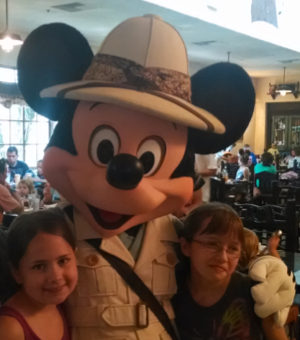 I'm just finishing up another family trip to Walt Disney World. Every time I'm here, I study the culture, habits, and design of the parks and resorts. I'm fascinated by their attention to detail, their ability to create brand new merchandising opportunities, and their ability to engage guests of all levels. I've written about lessons on giving donors a behind the scenes experience and three things Disney can teach you about fundraising celebrations. Today, I'll share some tips gleaned from the Disney Institute book Be Our Guest: Perfecting the Art of Customer Service. (I picked it up in Disney's Hollywood Studios and I'm writing this post at the Saratoga Springs Resort!)
I'm just finishing up another family trip to Walt Disney World. Every time I'm here, I study the culture, habits, and design of the parks and resorts. I'm fascinated by their attention to detail, their ability to create brand new merchandising opportunities, and their ability to engage guests of all levels. I've written about lessons on giving donors a behind the scenes experience and three things Disney can teach you about fundraising celebrations. Today, I'll share some tips gleaned from the Disney Institute book Be Our Guest: Perfecting the Art of Customer Service. (I picked it up in Disney's Hollywood Studios and I'm writing this post at the Saratoga Springs Resort!)
4 Lessons from Walt Disney World that can transform your fundraising
The Disney experience is often summed up in the word, "magic." In Be Our Guest, Theodore Kinni says that a good magic show is one thing to guests and another to the magician. To the guests watching the show onstage, it's an amazing experience of seeing the impossible happen. For the magician backstage, the show is a detailed process of well coordinated events and perfectly timed details.
Here are four backstage things to monitor to help donors feel a "magical" experience with your nonprofit:
Make the giving experience ridiculously easy
Disney makes it really easy to spend money. Whether it's upgrading from a theme park ticket to a "park hopper" or trading pins or getting bling for the new "Magic Bands," the opportunities to give money are smooth and relatively easy. Is giving to your nonprofit that easy? Test it out for yourself and identify the sticking points that make giving hard. I'm not suggesting you add lots of upsells or merchandise. Just that you make it "ridiculously easy" for donors to give you money. (Yesterday, I shared a detailed Disney inspired review of your online giving process to my Fundraising Kick coaching email subscribers. Ask the subscriber in your nonprofit to share that 6 question checklist with you.)
Make the donor feel special
One of the keys to Walt Disney World's high return customer rate, is the concerted effort to make the guests feel honored. Whether it's a character stopping by a table for a picture, or the Mayor and his wife stopping to chat on Main Street, cast members are generally very good about making you feel special when you're here. One of the reasons they can be so consistently good at this is that they are constantly studying their guests. They call it "guestology." They study both demographics and psychographics. For you, the demographics are facts about your donors: how old they are, where they are from, how much money they give. The psychographics involve what they want and need. What do your donors tend to want from giving? What kind of feeling do they need to have to keep coming back? Knowing these will help you tailor your communications to them. You'll likely communicate differently to a retired Baby Boomer than to a starting-their-career Millenial. But studying this also helps you see who you're missing. Perhaps you can make a small tweak in your communications to reach out to an entirely new group of donor prospects!
Listen to your cast members
One thing that's impressed me on this trip to Walt Disney World is the number of cast members walking through the parks. They're in polos and khakis, not costumes, so they look managerial. They appear to be observing how guests are interacting with the rides, the shops, and each other. There are also cast members throughout the parks taking quick surveys to monitor guest satisfaction. Are you asking your staff for their feedback about improving donor experience? Whether it's a formal survey of donors or gleaning your staff's observations, especially front-line staff like those answering the phones, you can glean some amazing nuggets to help donors have a better experience. And best of all, the nuggets are often inexpensive and easy. In Be Our Guest, Kinni tells a story of cast members constantly seeing guests not remembering where they parked after a long day in the park. They could remember what time they got to the park, just not where they left the car. The cast members were able to come up with a simple system of tram operators noting what section they were taking guests from at different times of the day. These notes were compiled and made it much easier for guests to find their cars. Ask your staff what questions or complaints are they're regularly getting from donors. Then ask them how they might suggest fixing it. You'll often be delighted with the ideas.
Make sure your standards are backed by processes
It's amazing to watch the lifeguards here. They have a system of checking zones created by swinging their hands from various points on the pool. They do this every time they "bump" or take over a portion of a pool from another lifeguard. This helps them see the pool and the swimmers in a fresh light. This attention to detail also makes the swimmers feel secure and taken care of. Systems like this abound at Walt Disney World. What about in your nonprofit? Take for instance donor communications. Just think about how a typo can create a glitch in the donor experience. A donor may think, "If they don't pay attention here, do they lack attention to my money too?" Do you have branding standards that are backed up by systems? Is there one person or a system of people that need to proof the communication before it goes out? Or do you personally have a system of scanning your communications before sending them to make sure they represent you and your nonprofit? Systems can seem confining and tedious. Especially when you're learning the systems. But they become second hand and improve the quality of your donors' experience.
Keep them coming back
We all would love our donors to keep coming back, to give year after year. Following these four ideas will help you develop a deeper, more personal, more "magical" relationship with them. Adding value to their lives while also stabilizing your nonprofit's funding!
What about you? What would you add? Tell us in the comments!
(c) The Fundraising Coach, LLC
Get 100 donors in the next 12 weeks? Learn how: 100 Donors in 90 Days!






May 20, 2014
5½ Things to say at Your Next Major Gift Solicitation
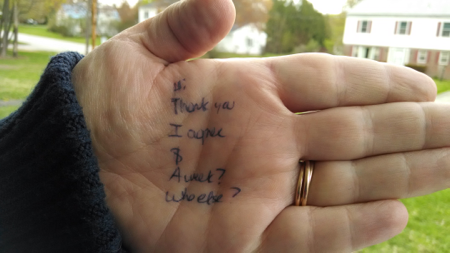 Since writing about the exact words to say on your next major gift ask, many have asked me for what to talk about during the meeting, both before and after the ask.
Since writing about the exact words to say on your next major gift ask, many have asked me for what to talk about during the meeting, both before and after the ask.
What to say to a donor prospect
Here are 5½ things you can say on your next major gift visit:
Hi
Having a genuine relationship with a donor significantly reduces any jitters you may experience during the meeting. And having a relationship often starts with something as simple as saying "hi." Asking for money may be new to you, but it's likely not new to them. If you're asking them for a major gift, they've probably been approached by other organizations too. And they may have even been asked by your organization. (Remember, this isn't necessarily their first date.) So start by being human and saying, "hello."
Thank you
Every major gift visit should be conducted from a posture of gratitude. A posture of gratitude fills you with confidence. The alternatives are postures of entitlement or desperation. Entitlement is the awful "do your part" twaddle spouted by many well meaning but ineffective membership drives. And even if you are desperately in need of their money, don't let it show. People don't give to need, they give to success. Leading with gratitude can be a way to signal to them that your nonprofit is successful at its mission. Find something you are sincerely grateful for: their past support, their leadership in some area of the community or nation, or simply the fact that they agreed to meet with you. And use that gratitude as the "home base" for your interactions.
I agree
An important part of most conversations is helping make the other person feel comfortable. In his book, Influence, Robert Cialdini states: "...as a rule, we most prefer to say yes to the requests of someone we know and like." Finding sincere areas of agreement is a very simple way to start helping even someone you just met know and like you. And it can often start with something as simple as, "I agree."
A specific dollar amount
A major gift solicitation isn't a solicitation without an ask! So in making the ask, specifically let the donor know what you'd like him to consider giving. Being specific shows them respect and allows them to answer more clearly. For more on this, including specific phrasing to use, read the post on talking to your steering wheel
4.5: If I don't hear from you, may I give you a call in a week?
No matter how well you prepare, sometimes the donor will say they'll need to think about it or talk it over with someone. That can be fine, but don't just leave it there! Walking away without a follow up plan leaves the donor in charge of following up. And no matter how much they love your nonprofit, they won't be as eager to follow up with you as you will be to hear from them. They'll leave the meeting and life will happen. Their silence will get you into in a weird head game of wondering when to follow up, wondering if you're bugging them, and wondering what their silence really means. Stop the weird head game before it starts! Ask them permission to follow up.
The best part? When you do follow up, you can say something like, "As I promised, I'm just checking in..." or "When we met last week, you asked me to follow up..." You'll feel much more confident in making the call--you're only doing what they asked--and it sends the right message about your organization--we are the kind of people who keep our commitments.
Who else should we be talking to?
A goal of every donor solicitation should be to build your prospect list. Whether the donor says "yes," "no," or "maybe," you should always be asking them who else you should be talking to. Phrases like "Who do you think needs to know about this?" or "Who else should have a seat at the table?" are great questions. Sometimes it helps to narrow down the group for the donor. For some reason, a general question can overwhelm the brain of the donor. Rather than "Who else should we talk to?" it can be easier for them if we ask "Who else at your CEO club should we be talking to?" Narrowing the group down actually helps free them up to think of people, even people outside of the group you mention. "Well, I'm not sure about the CEO club, but you know...you really need to talk to Joe about this."
What would you add?
Those are 5½ things I think you can talk about at every major gift solicitation. What would you add? Tell us below in the comments!
(c) The Fundraising Coach, LLC
Get 100 donors in the next 12 weeks? Learn how: 100 Donors in 90 Days!






May 6, 2014
Your steering wheel: the single most important tool for making effective fundraising asks
 The response to my "it's not the donor's first date" post to CEO's has been wonderful! I've received emails, tweets, and comments saying this was the best post they've seen in years. As Heather Stewart points out in the comments to the post, major donors actually get annoyed when the CEO doesn't ask!
The response to my "it's not the donor's first date" post to CEO's has been wonderful! I've received emails, tweets, and comments saying this was the best post they've seen in years. As Heather Stewart points out in the comments to the post, major donors actually get annoyed when the CEO doesn't ask!
I completely understand that. Major donors and major donor prospects know the value of a senior leader's time. If they're meeting with one of the top leaders and the leader does not ask them, it can cause them to wonder where else the leaders are squandering their time.
But no matter how much a CEO may agree with that post, if we don't equip her (or Board Members or Directors of Developments or volunteers) to ask effectively, she'll still falter when she's in front of the donor. And in faltering, she'll most likely not ask.
The exact words to say when making a major gift solicitation
Fortunately, the way to overcome faltering isn’t very complicated. The most effective technique I've seen is having clients repeat the solicitation wording over and over.
Every month, board members and CEO's ask me for the "perfect" words to say when making an ask. You'd be surprised at what can be effective! I've even seen a major gift ask on a post-it note! A sincere ask from a person of integrity can often overcome the most awkward wording.
But in my experience, most people find a version of the following phrase works:
"We'd like to ask you to consider a gift of [insert specific dollar amount] to [insert project or fund or the nonprofit's name]."
That's it. I've seen these simple words used to raise millions and millions of dollars.
Say it to your steering wheel
The secret to asking without faltering is repeating the ask over and over. And over. And over. Before you get in front of the donor.
So when you're in your car talk to your steering wheel. (Click here to tweet that.)
Play with the words. Find out what is the most comfortable for you.
"We'd like to ask you to consider a gift of [insert specific dollar amount]..."
"I'd like to ask you to consider a gift of [insert specific dollar amount]..."
"Would you consider a gift of [insert specific dollar amount]..."
I've been at this a long time and I still find I need to repeat the phrasing over and over. Fortunately, it's increasingly less weird to talk to the steering wheel. People simply think you're talking into a bluetooth headset. 
Here's why I think this works:
When we're asking people to donate, we have to do everything we can do to remove everything that might get in the way of making the gift. One of the biggest things we can do is remove any hesitation on our part. If we stumble when asking the dollar amount, the donor doesn't know what is causing the hesitation. But a red flag is raised in their minds. They don't know why, but it's now there. And that red flag costs us thousands of dollars every month.
As you talk to your steering wheel, you'll be focusing on the donor and you'll find yourself changing up the words, looking for the phrasing that will be most natural to say to her. As you repeat the phrasing, you'll find yourself experimenting with whether asking for "$300,000 over three years" or "$100,000 a year for the next three years" feels better for you. Most importantly, you make the wording of the ask your own. That brings confidence. So when you're actually in front of the donor, the ask sounds very natural as it just rolls off your tongue.
What if you don't know how much to ask
Sometimes, even after doing all the steps in the Ask Without Fear!® system, you simply don't know if the amount you intend to ask them for is the right amount. In cases like these, as in all cases in fundraising, I've found honesty to be the most effective fundraising strategy. Honesty is disarming and opens the donor up to wanting to help you. All you need to say is something like:
"You know, [donor's name], I have no idea how much to really ask you for...Would you consider a gift of [insert specific dollar amount] to [insert project or fund or the nonprofit's name]?"
Or
"You know, [donor's name], I have no idea how much to really ask you for...Would a gift of [insert specific dollar amount] to [insert project or fund or the nonprofit's name] be in your realm of imagination?"
Or
"You know, [donor's name], I have no idea how much to really ask you for...I could be way out in left field on this one but would a gift of [insert specific dollar amount] to [insert project or fund or the nonprofit's name] be a possibility?"
Do you see what you did there? You changed up the beginning a bit but you still used the exact phrase you've been saying to the steering wheel!
Be specific
One final thing on the "perfect" words for asking: ask for a specific dollar amount. A weak "Would you consider supporting our cause?" means nothing to the donor. Are you asking them to think positive thoughts about your cause? Or tell a friend about it? Or to contribute a canned good?
Show them enough respect to ask them the specific dollar amount you'd love them to give. They'll tell you whether it's a fit for them or not. But being specific will help the negotiation deal with concrete details rather than vague generalities.
Now go out there and talk to your steering wheel!
(c) The Fundraising Coach, LLC
Get 100 donors in the next 12 weeks? Learn how: 100 Donors in 90 Days!






April 25, 2014
Story Conference for Nonprofits: Last day for pre-early bird
Hollywood expertise for your nonprofit
For years, Chris Davenport has creating videos for nonprofits, employing the storytelling techniques he honed in Hollywood. For the first time ever, he's going to share them!
I speak all over the world, and I get to work with many great conferences. But I am really excited about a brand new conference happening in Seattle in November. Chris is so committed to the power of storytelling, that he's creating this two day event into its own story arc!
Along with Chris, you'll get to learn from:
Tom Ahern,
Shanon Doolittle,
Jeff Brooks,
Susan Howlett,
Vanessa Chase,
Ian Adair,
Michelle Brinson,
Peter Drury,
and me
Go to the Nonprofit Storytelling Conference page to see what makes this conference different from anything you've been part of in the past. You'll learn how to craft your nonprofits stories, how to "pre-load" them into your donor prospects' brains, and even how to use the "soap opera" secret to keep donors engaged!
Special pre-early bird pricing ends today!
Hurry! Space at the conference is extremely limited because we want to avoid the typical "generic attendee" feel of most conferences.
Better still, there's currently a steep "pre-early bird" discount. But that ends today. So head on over to http://nonprofitbestpractices.com/collections/storytelling/products/storytelling-conference get your ticket.
Excitement, not hype
I know the "hurry" and "buy now" can sound hype-y. But it's really 100% excitement. Without even having a list of speakers we've had people from as far away as New Zealand buy tickets for this conference. I've rarely sensed this much of a "buzz" about an event.
Read about it for yourself at: http://nonprofitbestpractices.com/collections/storytelling/products/storytelling-conference
(c) The Fundraising Coach, LLC
Get 100 donors in the next 12 weeks? Learn how: 100 Donors in 90 Days!






April 22, 2014
CEO's: It's not THEIR first date!
Courtesy of Robert McGoldrick under Creative Commons License
Over the last 18 months or so, I've been hearing a similar phrase from a number of my nonprofit executive coaching clients. The phrase?
"I don't ask on the first date."
This is often said with a self-righteous smuggness, as though the CEO is taking the moral high ground. Sometimes it's said in advance of the meeting. Other times it's an excuse for why a scheduled solicitation devolved into merely another cultivation visit.
These same CEO's are incredibly frustrated that they can't find enough donors for their cause. And that it takes forever to finally get a meeting scheduled with a prospect. After they've met with a prospect, had their "first date," they're ready to ask. But the prospect now seems allusive.
Dodging a bullet
I had an enlightening moment a couple weeks ago while interviewing a corporate CEO. He said he was probably too aggressive about asking. "I make the ask within 10 minutes of being there. I figure, why beat around the bush?" Then he gave me some insight into his mind when he's the one being asked.
"When a nonprofit CEO comes to visit me, I know why they're there. If they don't ask me, I feel like I've dodged a bullet. When they call back in a couple weeks, it's really easy to say, 'Oh, we just met. There's no need to meet again. Try back in six months.' And six months later to say, 'We recently met. Maybe six months from now.'"
Have you ever been on the "maybe in six months" cycle? It's annoying isn't? All that communication, or attempted communication, is about the ask not about developing a relationship. You start getting the feeling that you're "bugging" and "hassling" the prospect.
Get your ego out of the way
In my experience, your "not asking on the first date" is a thinly veiled cover for being afraid. You are reluctant to ask so you use this nice sounding excuse to get out of doing it. It sounds like you are being donor-centered. But you're not. You're really putting yourself at the center!
If you were to take a step back, you'd realize this isn't about you. It's about your nonprofit and the donor. This isn't your prospect's first date! They're already getting to know your nonprofit. They may have even indicated what aspect of your nonprofit they'd like to invest in. Their relationship is with the organization's mission, not with you!
This is precisely what you want! Staff come and go. In order to have a successful fundraising program, you need donors who will support your nonprofit over a number of years, regardless of who happens to be at the helm or in the development director role.
Trust the relationship--and get to gratitude as quickly as possible
Even if you're not sure if your team has done the "perfect" relationship building, trust that your visit isn't the prospect's "first date." When you make the ask, you may find it helpful to couch it in terms like:
"I know you and I have only just met, but I can see you're deeply committed to the work we do. May we ask you to consider a gift of _________."
Most times, donors will be fine with that. They'll even give you some extra grace since you're the CEO. They know your time is precious so many will expect you to not be taking it up with multiple visits to them. And in asking sooner rather than later, you're showing you respect their time too.
Once they've made their first gift, the fun starts. Now your communication can be about showing the impact their gift is making. You're talking about them and the great things they're helping make happen. Showing a donor the good work their investment is doing is far more fun than trying to chase them down for a solicitation appointment!
If you've got the initial appointment, strike while the iron is hot and get to gratitude as quickly as possible.
(c) The Fundraising Coach, LLC
Get 100 donors in the next 12 weeks? Learn how: 100 Donors in 90 Days!






April 8, 2014
Fundraising certainly is fun!
 I often remind people that fundraising is a marathon, not a sprint. It takes hard work, strategic planning, and most importantly consistent execution of the plans.
I often remind people that fundraising is a marathon, not a sprint. It takes hard work, strategic planning, and most importantly consistent execution of the plans.
But it's important to remember that fundraising is fun! We get to connect donors' assets with their passions. Who wouldn't want to be part of that?!
In my trainings, I say that the donor is like an electrical cord and our nonprofit is like a wall of outlets. Some of those outlets are three-pronged, some are two-pronged, some are two-pronged with a fat edge, some are tree shaped like the plugs in New Zealand. We get to walk up and down the wall of our nonprofit with the donor, trying to figure out which outlet is the best fit. Then when they give "POW!" -- it's electric! Their eyes light up and the joy they experience is palpable.
A form of alchemy
So I was thrilled when last week a Graham-Pelton colleague shared the New York Times Opinion piece by Arthur C. Brooks called "Why Fund-Raising is Fun."
Brooks was led to a passion for fundraising by studying the social data that indicate givers have a higher quality of life. Even a higher income. That got his family more active in giving personally, giving both time and money. As his career progressed, he became an active fundraiser for his organization. I love the discovery he makes in that capacity:
"In this role, I have found that the real magic of fund-raising goes even deeper than temporary happiness or extra income. It creates meaning. Donors possess two disconnected commodities: material wealth and sincere convictions. Alone, these commodities are difficult to combine. But fund-raisers facilitate an alchemy of virtue: They empower those with financial resources to convert the dross of their money into the gold of a better society."
While I don't agree with the "dross of their money" attitude, I love the phrase fund-raisers facilitate an alchemy of virtue. Helping donors connect with their passions is helping create meaning. For some it makes all they gone through now have a purpose. That kind of connection, that creating meaning, is like magic.
Fundraising is a privilege
As fundraisers, whether we are paid by an organization or volunteer to raise funds, we are privileged to see magic happen. We are the facilitators of that magic!
That is what makes fundraising fun. And this is what gets us through the tough days when it feels like nothing is happening. Who wouldn't want to be part of this process?!
I encourage you to read Brooks' entire piece. You can find it at: http://www.nytimes.com/2014/03/30/opinion/sunday/why-fund-raising-is-fun.html
(c) The Fundraising Coach, LLC
Get 100 donors in the next 12 weeks? Learn how: 100 Donors in 90 Days!






April 2, 2014
[Guest Post] 5 Principles to crowdfunding success - a case study
Today it's my distinct pleasure to introduce you to Renee Tougas. I've known Renee and her husband Damien for more than a decade. They're not your typical fundraisers, so when their crowdfunded Kickstarter campaign for $16,000 raised over $19,000, I knew I wanted their story.
As a fundraising coach, I'm not advocating nonprofits scrap their traditional fundraising program in favor of crowdfunding. But if you have the pieces Renee talks about, it might be an important tool in your fundraising toolkit. Be sure to check out these other posts on 6 channels to call in the crowds for crowdfunding and 3 things to avoid in your crowdfunding campaign.
Renee and Damien live in Quebec. But for the next six months, they and their three kids will be living on the Appalachian Trail. Here Renee is at her best, sharing their story, their thought process, and pulling out lessons anyone can use to make crowdfunding work for them. All interspersed with some of her stunning photography. You can follow Renee on Twitter @fimby and Damien @toesalad.
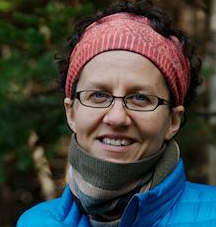
Crowfunding Success - How we crafted our "Beyond Our Boundaries" campaign
by Renee Tougas of http://fimby.tougas.net/
When my husband first proposed hiking the Appalachian Trail as a family I had little clue about where that idea would go. I certainly didn't envision this.
A lot of adventures, and even fundraising projects, start the same way. A seed is planted and what grows from that is much more than we could ever have imagined.
More than five years ago my husband planted the seed of doing a family thru-hike of the Appalachian Trail.
At the time I could not conceive how this was remotely possible. The backpacking part was daunting enough, but for a lower middle class family of five to just "check out" of normal life for 6 months, that bordered on fairy tale. Nonetheless we held space for this dream in our collective family consciousness.
We started to nurture the idea with family discussions, longer backpacking trips, and gear upgrades. And in a huge, life changing move we restructured our income earning to location-independent self employment. And "all of sudden" the door opened for us to truly consider six months of hiking with our family. Of course it didn't happen suddenly at all, but through consistent decision making and action (read: blood, sweat and tears) in the direction we wanted to go.
And that's where we found ourselves last year at this time. Theoretically able to take the time to do a long hike but only two years into our self-employed gig not in a financial place to do so. Unless... unless we could somehow earn money while on the trail. For the previous two years we had been building recurring streams of income but those alone would not support us.
We don't expect other people to pay us to hike. Now that would be a fairy tale. We are entrepreneurs, very much grounded in the reality that people pay other people for goods and services of value. We needed to produce something of value that people could purchase while we were hiking. With the intention of that income filling in the financial gaps during our six month adventure.
Thus, the idea for Beyond our Boundaries: A Family Adventure on the Appalachian Trail was born.
Our basic idea was this: create an engaging video series of our family hike, while hiking. Make it interesting, informative and inspiring. Make it something we would be happy to pay for and happy to tell our friends about. Sell individual episodes and monthly subscriptions at a really affordable price.
Through years of blogging about being a family in the outdoors together and searching in vain ourselves for family outdoor inspiration we knew there was a market for this.
We had an idea that we really believed could fly. We had a market. We had the communication and technical skills to deliver a good product. We had "the cast" aka: our family, ready and at our disposal.
What we lacked was some start up funds.
Producing and delivering an online subscription video series required us to purchase additional tools and web infrastructure, not to mention hiring an editor to help us actually create a good product.
Some friends of ours recommended Kickstarter as a way to bootstrap our project.
With the exception of band-trip fundraising as a teenager, raising money is something I've haven't done. I have an aversion to the very idea of fundraising. I'm happy to give money to things I believe in, but asking for money, well that's a completely different story.
The more my husband and I talked about it though, the more I came to see that a Kickstarter campaign would be an ideal way to raise funds for our creative project.
Kickstarter is a crowd funding site, the world's largest apparently. Their mission is to bring creative projects to life. To use the Kickstarter platform to raise funds, your project must be about producing a creative work - film, music, stage shows, comics, journalism, novels and book, video games, etc.
In exchange for pledging to support your project, donators, also called referred to as Kickstarters or Backers, receive rewards if the campaign is successful. These rewards are tangible digital or hardcopy products related to the project itself. A download of the video or music album, for example.
The unique feature of Kickstarter is that the fundraising campaign must reach your goal in order to collect the funds from your backers. It's all or nothing. This gives backers a certain reassurance that not just any money-grabber will attempt to raise funds and that project creators will follow-through on the project once receiving their funds.
Our project idea was to create a video series. Access to the video series is what we could offer our backers as a reward. By backing us they basically pre-bought their subscription to the series. Higher level rewards, designed with companies and small businesses in mind, included advertising on video episodes and our product page.
Our Kickstarter campaign was successful. Yay!
It provided the funds we needed to secure an editor, pay the costs to set up our web structure (we did all the actual work ourselves since my husband is a web developer), pay ourselves a small stipend for our work, and purchase the remaining tools we needed to deliver a quality product.
In exchange, our backers gained access, at a discounted price, to the videos.
This was our first Kickstarter campaign. It was actually our first fundraising campaign ever.
We're not a non-profit. We're a family, self employed sole proprietors, fundraising isn't within our normal activities. And still we were successful, very successful actually, at meeting our $16,000 goal.
We ran a 30 day campaign. On Day 24 we reached our goal and by the end of the campaign we raised $19,109, 119% of our goal.
Here are five principles that I think helped us to reach our goal.
1. A strong foundation
Both my husband and I are bloggers. We've been writing and connecting with people online with our blogs, Facebook, and other social media (before it was called that) for nearly a decade. It was those years of connections that laid the foundation for a successful campaign. We didn't just come out of nowhere asking for money.
There is no such thing as overnight success, in fundraising or living.
Certainly, there were a few backers who supported our campaign who didn't know us very well. But most of our backers have come to know and trust us online through the work we've already done. We were asking people to support the creation of project. To believe in something not yet produced. Relationship and trust were key elements to this. You don't grow those overnight.
2. A diverse network
Like I mentioned already both my husband and I are bloggers, but we blog about different things. I'm a memoirist, story telling, homeschool "mommy" blogger. My husband writes a product focused blog about minimalist footwear. Our interests and networks overlap in the areas of intentional and adventurous family living and outdoor pursuits. Not surprisingly, that is what our video series is also about.
To market our campaign we appealed to both our social networks. Within our social networks, our friends, fan, and followers shared our project with their networks, which further diversified our reach.
I do think having a broad and diverse social network sharing our project was key to our success.
3. There is no "if you build it they will come"
It may have worked in Field of Dreams (the 1989 movie starring Kevin Costner) but real life dream making doesn't work that way. In reality, it's more like if you work a lot to build it and then work a lot to tell everyone you know and have them tell everyone they know, maybe people will come.
Some people have this funny notion that Kickstarter is an easy way to raise funds. Slap up a video, ask people for money, see the money roll in.
Running a successful Kickstarter campaign is a lot of work. We spent four months preparing our campaign and then invested many hours during the actual 30 day run. I've seen some people compare it to a full time job. For us, it was definitely a demanding part time job (that we did on top of our usual day jobs).
4. Capitalize on team strengths
This was a family Kickstarter campaign. My husband and I did it together and we participated in different ways depending on our strengths and interests.
I wrote the landing page. Damien determined our budget. I wrote script for the video. My husband managed the video technology.
Most creative projects are collaborations of some kind. Two minds are better than one kind of deal. Play to your team strengths.
5. Ask for help
We had never done a Kickstarter campaign before. It was friends who had run successful Kickstarter campaigns who counseled us to give it a try. Because they seemed to know what they were doing, we asked them for their feedback and input each step of the way. They previewed our video pitch and we re-did the whole thing based on their recommendations.
They read our landing page copy and gave valuable insight to what backers would want to know. We adjusted accordingly.
Responding and tweaking our work based on their feedback took extra time for sure. But that was time well spent.
Using a crowd funding platform like Kickstarter won't work for every fundraising project. But if you want to raise funds for a creative project, I hope you find these tips from our successful Kickstarter campaign helpful for reaching your own goals.
If you want to keep tabs on the Tougas as they are on the trail, check out Beyond our Boundaries: A Family Adventure on the Appalachian Trail .

(c) The Fundraising Coach, LLC
Get 100 donors in the next 12 weeks? Learn how: 100 Donors in 90 Days!






March 25, 2014
Are you using that all wrong?
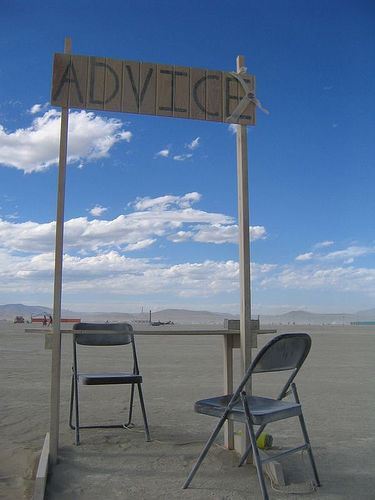 Sometimes, we get so used to using something, we don't realize we're using it the wrong way. Here are three tools that nonprofits use all the time. And many use the wrong way.
Sometimes, we get so used to using something, we don't realize we're using it the wrong way. Here are three tools that nonprofits use all the time. And many use the wrong way.
Common uses and a better way
Donor Database
Common use: Recording gifts and keeping addresses. If this is all you're using your donor database for, you're using it wrong.
Better use: Beyond keeping transactions and addresses, you can keep notes from visits. Record birthdays, areas of interest, hobbies, and when people like to be solicited. Used well, donor database system can be use to honor donors.
Social Media (Facebook, Twitter, Pinterest)
Common use: Posting updates about a nonprofit.
Better use: The power in social media is realized when you start interacting with others. Liking other posts and commenting appropriately (not promotionally). If you come to the social media party, don't be the guy that is so self-absorbed he only talks about himself. Be genuinely interested in other people. Share other organization's posts. Be social.
Email Newsletters
Common use: Bragging about your organization and just talking about your people or work.
Better use: A better use for email newsletters is to show donors what their gifts make this possible. You need to be explicit. Rather than showing them by talking about your nonprofit, you need to make donors the hero. Afterall, if they didn't give, you wouldn't be able to do anything. (For an amazingly simple way to do this, check out this quick video from Tom Ahern: http://bit.ly/AhernNewsletter.)
Take time to re-examine
As you can see, the "wrong" use is less about total misuse as it is about settling for partial use. It's not like using a screwdriver to pick your teeth, or trying to twist a screw with a toothpick. It's more like having a Lamborghini and only going to the corner store.
We're 12 weeks into the year. Just about 25% gone. Now is a great time to reassess the tools you're using. Perhaps you could set a calendar reminder to do this every 12 weeks. One time you may want to examine digital tools. Another you may want to assess your use of meetings or "annual" performance reviews. Another time, your use of the facilities you have.
If you need some other ideas, check out this thread on Facebook.
What about you?
Have you recently recognized some tools you're using wrong? Please share your breakthroughs in the comments below!
(c) The Fundraising Coach, LLC
Get 100 donors in the next 12 weeks? Learn how: 100 Donors in 90 Days!







